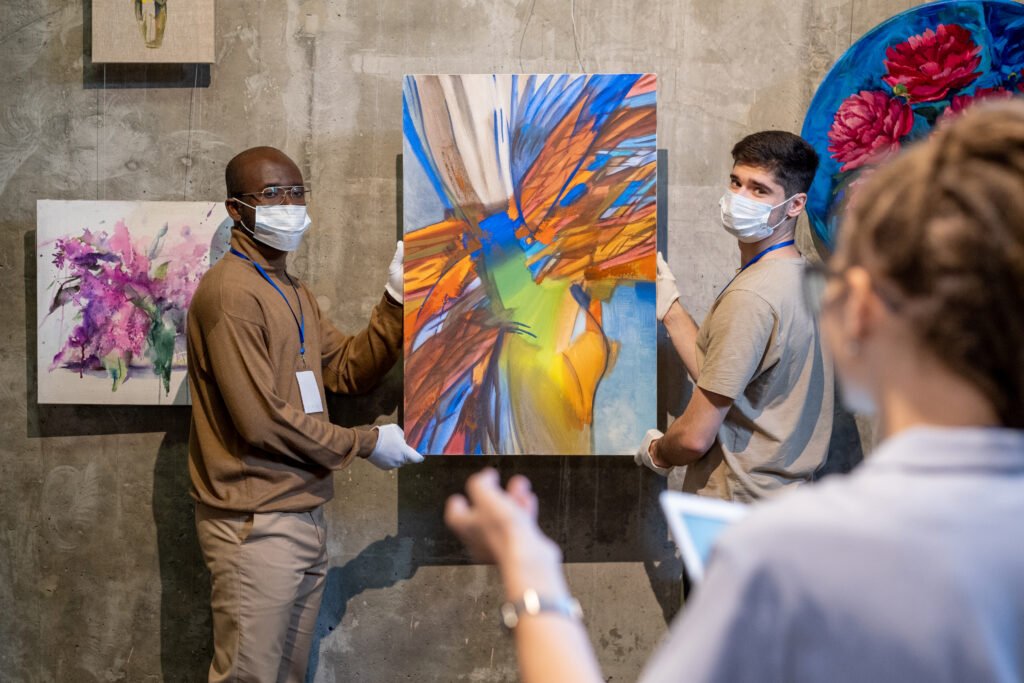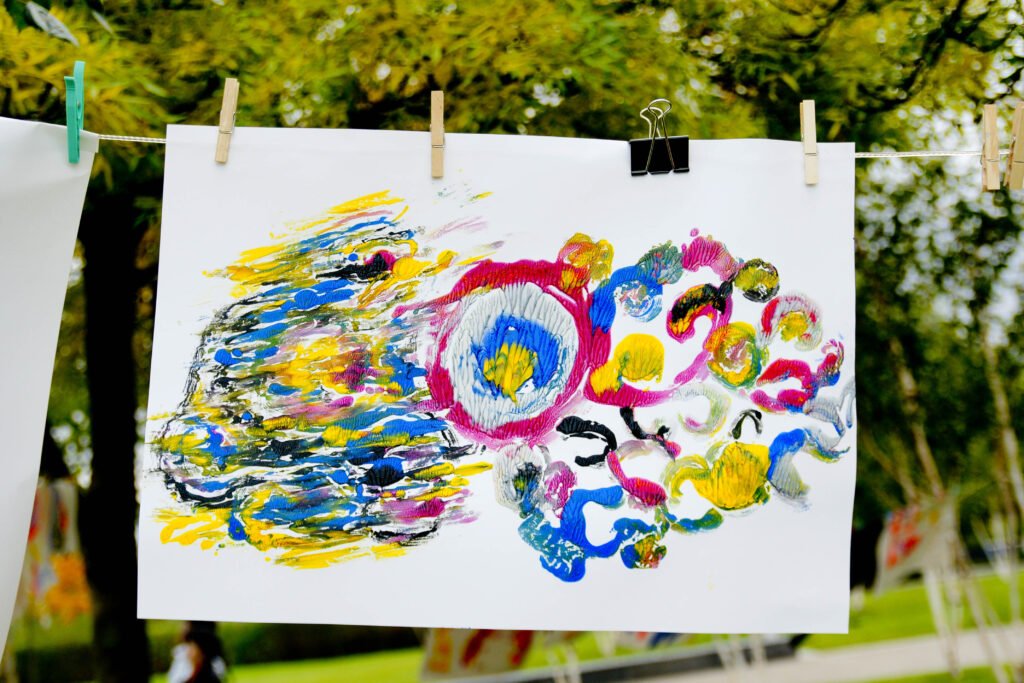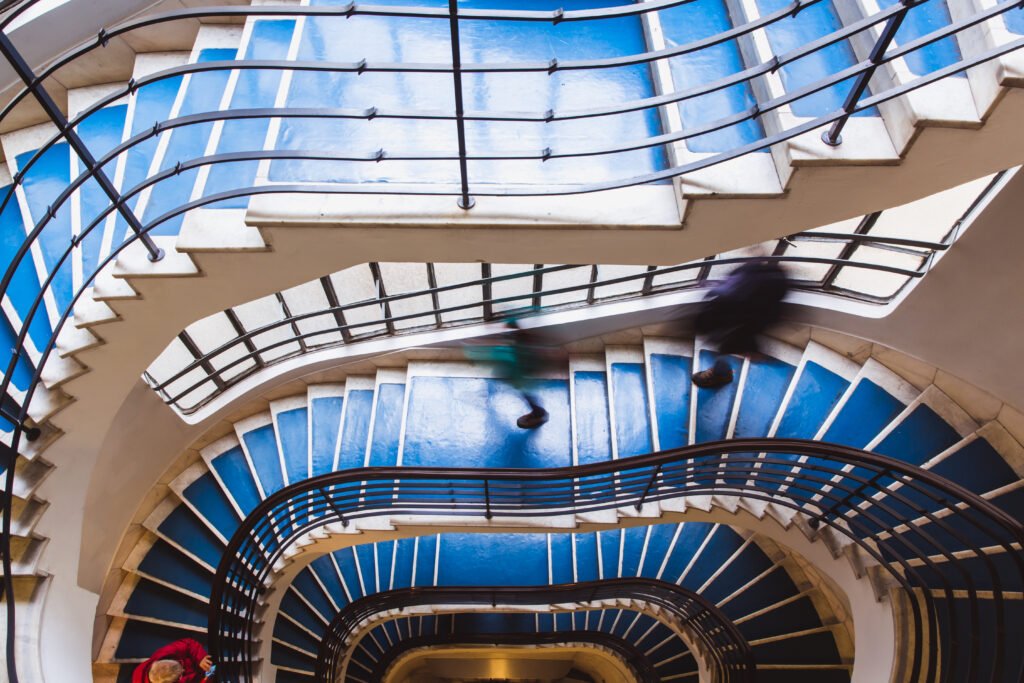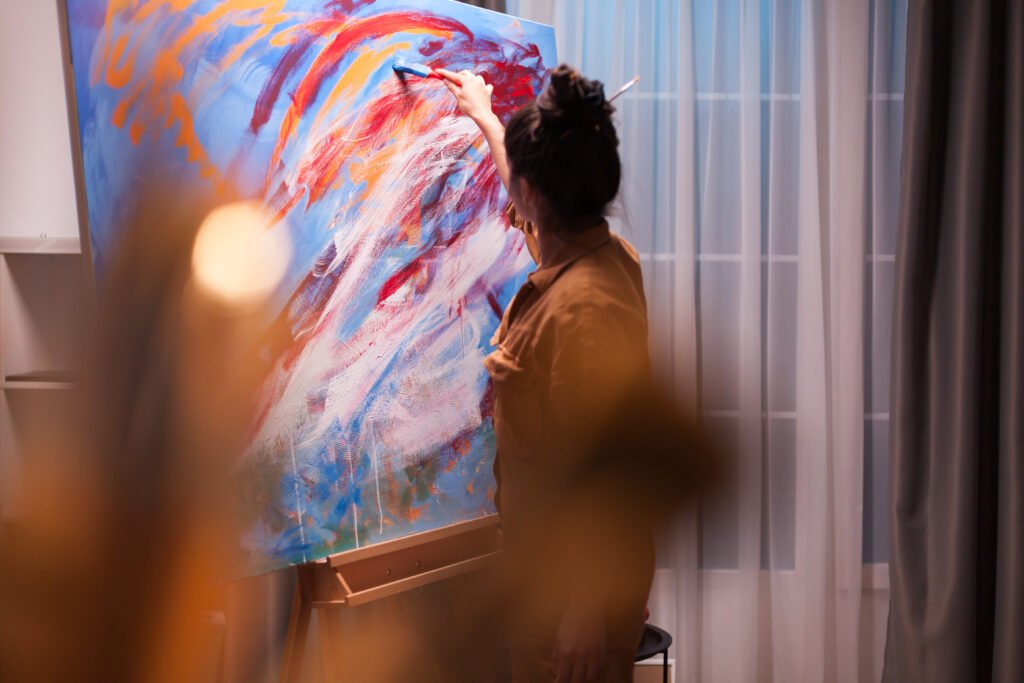Abstract art has always been more than form and color. In many cases, it becomes a vehicle for that which cannot be said, named, or directly represented.
Especially in the work of artists like Wassily Kandinsky, Mark Rothko, and Hilma af Klint, spirituality plays a central role. It shapes the gesture, space, and intention behind each image.
These artists did not merely seek formal innovation. Their visual output expresses an inner search, an attempt to capture realities that go beyond the material world.
The invisible, the ethereal, and the transcendent do not appear as illustrated themes but as vibrant presences within the composition. Understanding spirituality in abstract art, therefore, requires a deeper gaze beyond the surface.
Abstraction as a language of the unseen
Wassily Kandinsky was one of the first artists to directly link abstraction to the spiritual dimension. In his book Concerning the Spiritual in Art (1911), he argues that art must free itself from objective representation in order to reach a higher plane of the soul.
For Kandinsky, color and form act as internal forces that affect the viewer’s sensitivity. This conception played a decisive role in the development of abstract art in the twentieth century.

Hilma af Klint, in fact, preceded Kandinsky by several years, although her work was only recognized later. A mystic and student of theosophy, she produced more than a thousand paintings and drawings. These were based on mediumistic experiences and visions.
According to research conducted by Lund University (The Spiritual Science of Hilma af Klint, 2021), her work forms a complex visual system of symbols designed to translate the invisible forces that govern the universe. Abstraction, in this context, is not an escape from reality, but a profound connection with its hidden structure.
Mark Rothko, although not connected to esoteric doctrines, explored the painted surface as a field for meditation and emotional intensity. His large chromatic fields do not aim to illustrate but to evoke an expanded state of consciousness.
A study from Stanford University (Emotive Color and Viewer Response in Rothko’s Work, 2019) demonstrated that viewers observing his works activate brain areas linked to empathy and contemplative silence. His art, therefore, offers a spirituality rooted in the encounter between color and the observer.
Abstract art and transcendence in contemporary space
In times marked by acceleration and image overload, abstract art remains relevant precisely because it proposes a pause, a space for silence and contemplation. Unlike closed narratives or explicit messages, abstraction invites the eye to wander or to find itself through formal relationships, tonal variations, and intentional gestures.
This potential explains why abstract art continues to be present in museum collections, architectural projects, corporate interiors, and daily life through abstract art for decoration.
More than a decorative resource, it functions as a point of balance in environments saturated with stimuli. The growing interest in buying abstract art for personal and professional spaces reinforces this search for sensitive connection in a digital era.
When observing the current sale of abstract art, it becomes clear that many platforms are beginning to value not only the image but the spiritual narrative behind it. Many collectors select artworks not for what they represent, but for what they make them feel.
Contemporary artists like Anish Kapoor or Marina Perez Simão keep this tradition alive, showing that the unseen continues to be a vital substance of creation.
Abstract art still echoes the mystical gesture, even when reformulated. In a world that insists on clarity, it reminds us that what cannot be named is also essential. In this space, its spirituality remains relevant, powerful, and necessary.



